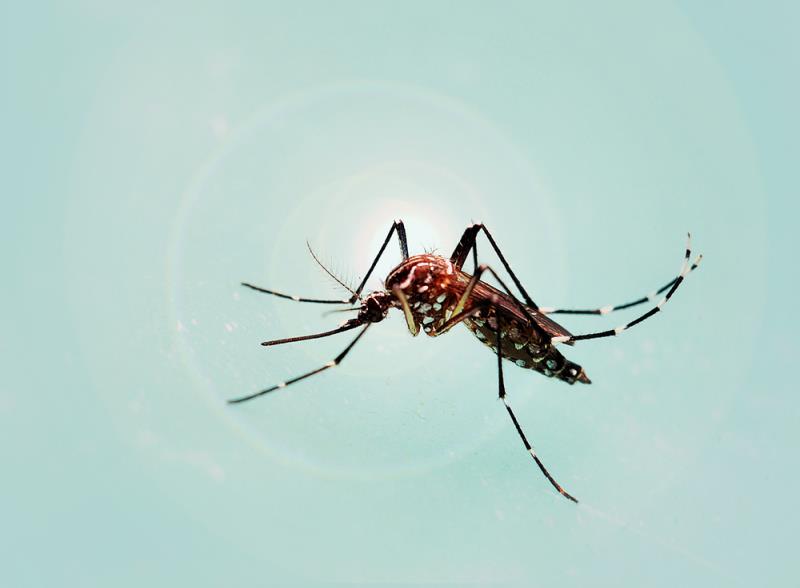Dengue does not disappear in the COVID-19 pandemic




 Symptoms of dengue and COVID-19 can sometimes look similar.
Symptoms of dengue and COVID-19 can sometimes look similar.With the overload and constant barrage of news and information pertaining to the COVID-19 pandemic, it is easy to lose track of other infectious and equally deadly diseases.
One such disease is dengue, where the symptoms can overlap with those of COVID-19, said Dr Mahathar Abd Wahab, Consultant Emergency physician and Head of Emergency and Trauma Department at Hospital Kuala Lumpur. Speaking about the possibility of symptom overlap in patients presenting at the emergency department, Mahathar said: “Dengue is always there, it is always with us.” In fact, Mahathar said there were instances where patients with dengue were misdiagnosed as suffering from COVID-19.
Mahathar was speaking at the weekly Clinical Updates in COVID-19 webinar organized by the National Institutes of Health (NIH) Malaysia. In his presentation on how emergency medicine clinical practice had changed in the environment of the COVID-19 pandemic, Mahathar touched on the ways of differentiating dengue and COVID-19 patients in the emergency department.
Because of this constant fear of diagnosis mix-up, Mahathar said a poster was created in his department to help healthcare workers (HCWs) differentiate dengue and COVID-19. “At the height of the pandemic, it was very easy to forget about dengue [as a possible diagnosis].” The poster informs the emergency HCW to look at the patient at point of contact to see if they have history of travelling recently or if they came from a dengue endemic epidemic area. Then, they should ask if the patient has had prior contact with a known COVID-19 patient, or is from a known cluster zone.
Clinical feature wise, those afflicted with COVID-19 tend to develop dry cough, fever, myalgia, malaise, anosmia, and headache. They may also present with a sore throat and rhinorrhea, but these are less common. COVID-19 patients also tend to have fever, breathlessness and tachycardia while dengue patients will have fever as intial symptoms then remittent fever during the critical phase. Dengue patients also present with abdominal pain, vomiting, diarrhoea and lethargy, with a tendency to bleed.
When looking at the blood profile, COVID-19 patients tend to have a low-to-normal total white blood cell count while dengue patients will have very low total white blood cell count. COVID-19 patients will have low-to-normal levels of haemoglobin and haematocrit with relatively low platelet count (>100,000/microlitre). They will also exhibit a sudden drop in absolute lymphocyte count. Dengue patients tend to have higher haemoglobin and haematocrit levels with very low platelet count.
Further laboratory investigations will show additional differences between COVID-19 and dengue patients, with COVID-19 patients showing normal sodium levels while dengue patients may exhibit low sodium levels. COVID-19 patients exhibit prolonged prothrombin time while dengue patients exhibit prolonged activated partial thromboplastin time. Additionally, COVID-19 patients have increased C-reactive protein, D-dimer and creatine kinase levels while dengue patients exhibit increased lactate dehydrogenase levels.
Point-of-care ultrasound has been found to be is a useful tool to differentiate COVID-19 and dengue, too. COVID-19 patients presenting in Stage I and II show normal lung ultrasound. Stage III patients may exhibit irregular pleura with multiple B lines, skip lesion, and/or subpleural consolidation at posterobasal zones and this patients do not have evidence of hypoxia. Stage IV COVID-19 patients exhibit bilateral multilobar confluent B-lines with gravitational consolidation, or more diffused findings on lung ultrasound and requiring oxygen supplementation. Stage V disease sufferers exhibit diffused bilateral confluent B-lines, acute respiratory distress syndrome features, and focused cardiac ultrasound / point of care ultrasound will reveal abnormal left ventricular ejection fraction and cardiomyopathy or evidences of multiorgan dysfunction.
Dengue patients, on the other hand, will reveal features of leakage syndrome such as gall bladder wall thickening and / or pericholecystic oedema, pleural effusion, ascites, and pericardial effusion. Dengue patients may also exhibit multiorgan failure, abnormal left ventricular ejection fraction and diastolic dysfunction. Be aware also that both dengue and Covid-19 can present at various stages of the diseases. For Dengue, patients may present in febrile phase, critical phase or recovery phase, hence its very important to identify in which phases that the patients presented. One need to analyse the laboratory and other point of care results in the context of clinical presentation.
Importantly for HCW, all the component that differentiate suspected Covid-19 and Dengue must not be interpreted in isolation. The whole constellation of signs and symptoms, biochemistry and point of care ultrasound should be interpreted as one entity or as a syndromic approach towards identifying the most likely syndrome. Lets not forget dengue, its still an endemic in our country, like Covid-19 in the very near future.